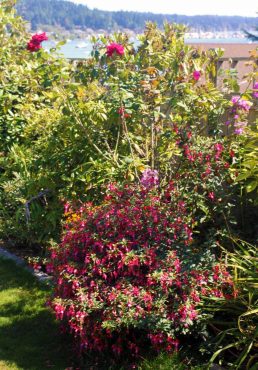 If you remember hardy fuchsias in grandma’s backyard, you know that they have been grown for a long time in our maritime climate. Originally native to South America and New Zealand, many fuchsias are in local display gardens, including one in front of the Poultry Barn at the Kitsap County Fairgrounds that is maintained by the Peninsula Fuchsia Society.
If you remember hardy fuchsias in grandma’s backyard, you know that they have been grown for a long time in our maritime climate. Originally native to South America and New Zealand, many fuchsias are in local display gardens, including one in front of the Poultry Barn at the Kitsap County Fairgrounds that is maintained by the Peninsula Fuchsia Society.
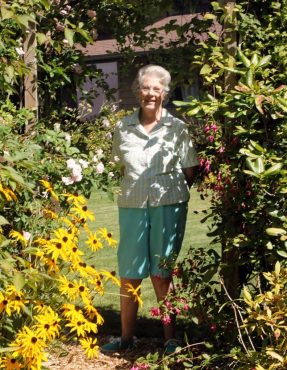 Fuchsias are often seen in combination with rhododendrons because they flower later in the season. They are enchanting, delicate-looking flowering plants.
Fuchsias are often seen in combination with rhododendrons because they flower later in the season. They are enchanting, delicate-looking flowering plants.
Hardy fuchsias in the West Sound area are popular in home gardens, too, and grow as herbaceous perennials that bloom from June if very hardy or July if listed as hardy, until the first frost.
They lose their leaves during winter and grow them back from the lower stem or from the roots. Many typically die back in winter and grow back in the spring. Some years, they die back to the ground and look like dead sticks, and other years, depending on the harshness of the winter, you will see new growth on a previous year’s growth. Hardy fuchsias flower on the current year’s growth so pruning hard in late winter or early spring, when you see signs of life, is a good guide.
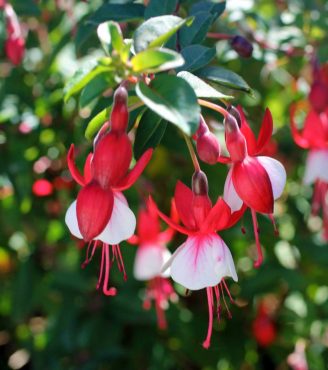 You need patience when growing fuchsias. Some can be slow to show signs of life. If you are not sure whether the plant survived the winter, gently scratch a cane with your thumbnail and if you see green, continue to wait. Start a monthly fertilizing schedule in April to encourage vigorous flowering shoots to develop.
You need patience when growing fuchsias. Some can be slow to show signs of life. If you are not sure whether the plant survived the winter, gently scratch a cane with your thumbnail and if you see green, continue to wait. Start a monthly fertilizing schedule in April to encourage vigorous flowering shoots to develop.
Some gardeners like to prune during the fall cleanup to make the plants look neater, but water may seep down the stem to the roots and cause them to die of root rot. This problem is most likely when the plants are young, before they are established in the ground.
Some fuchsias are tender and are treated as annual plants. Gardenmeister upright fuchsia and ‘Blue Eyes’ trailing in baskets are two that generally survive one season until frost and are easily replaced the following spring. Both Annas and Rufous hummingbirds enjoy their flowers, so do not let the tender survival deter you from growing them. Variety selection is the key when you are looking for hardy fuchsias.
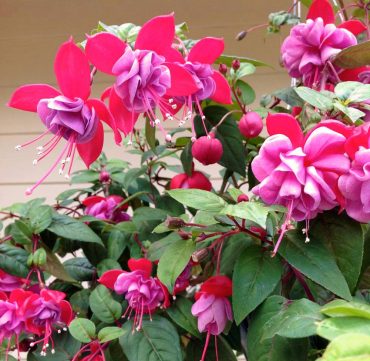
Different Growing Habits
Fuchsias fall into two main types of plants: upright bush or trailing. Look for this information when making selections. By the second or third year in the ground, your little plant start will look very different than when it was purchased.
Hardiness in the Ground and in Containers
Identifying hardy fuchsias can sometimes be done by looking at the flower form. Generally flowers with four petals and sepals that wrap around the flower are likely to be hardy.
Northwest Fuchsia Society members test plants for a minimum of three years and assign hardiness as indicated by H1 (not hardy), H2 (needs protection) and H3 (very hardy and robust). Growers use this scale to help gardeners understand that the care for plants grown in the ground may not be true for the same varieties grown exclusively in containers. Container plants need more shade, water and fertilizer than plants in the ground. Containers survive winters best in a cool 30- to 40-degree greenhouse or similar location out of the rain.
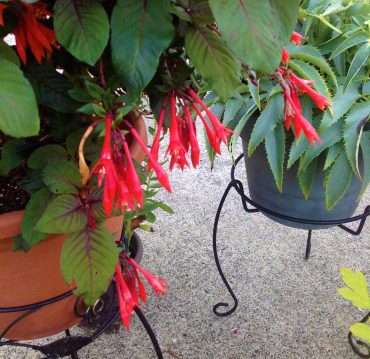
Plant Care
Fuchsias are generally considered to be sun-to-part-shade plants in West Sound. However, some are tolerant of an in-ground, full-sun location, especially if the plant was acclimatized to sun from a small plant start grown in a container for several months.
Purchasing starts at one of the many club sales or from a specialized fuchsia nursery requires that you grow the start in a gallon container to produce more roots before transplanting into a garden location.
Fuchsias respond to being “planted deep” in the ground (rather than at the level of soil in the container), as they will form new roots along the stem. You may recall this as a best practice for growing tomatoes.
In-ground hardy fuchsias need water when rainfall is inadequate. Container-grown plants need more water than those grown in the ground. Fuchsias prefer cool, moist growing conditions.
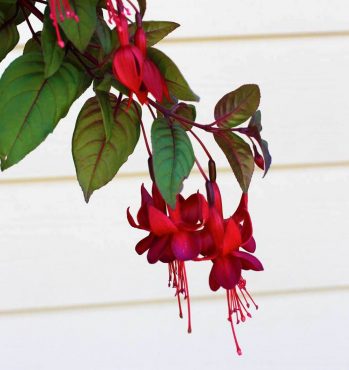
Fertilize with a balanced 10-10-10 or 14-14-14 once each month from March until August.
Pinching the tips of a fuchsia will encourage branching with dense, bushy growth and more blooms. Stop pinching when the blooms begin.
Fuchsias are not bothered by excessive types of pests or diseases. Similar to other perennials, aphids and spider mites may show up and can be washed off with a spray of water from the hose. Slugs may bother young plants early in the season and when the first rain brings them up in fall.
Cut off flowers when they begin to fade to encourage continuous blooming.




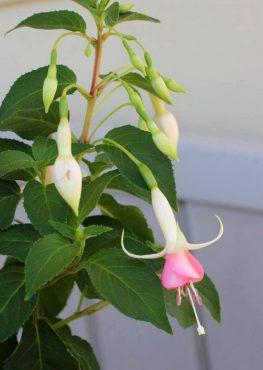
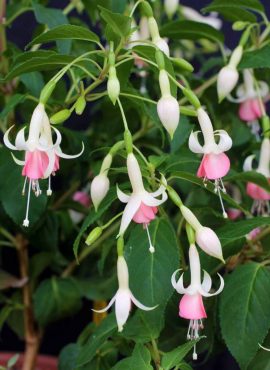
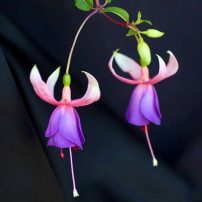
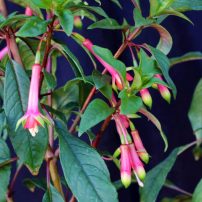
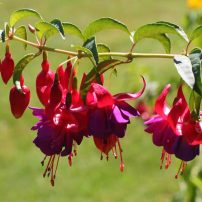
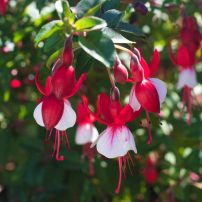
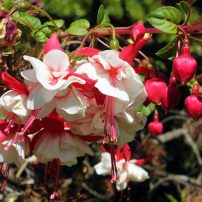
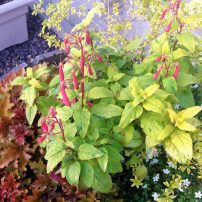
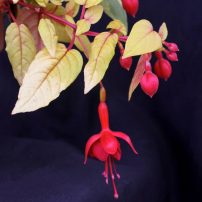
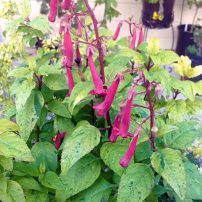
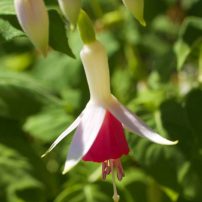
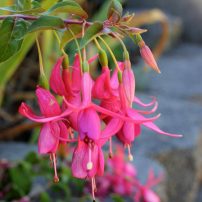
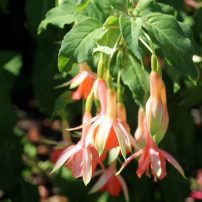
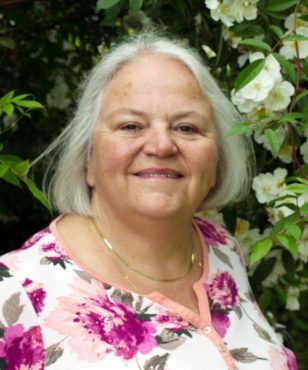























Comments